More than half a million people would use an Aberdeen cable car every year, it has been claimed.
We revealed plans for a line from the Castlegate and the beachfront earlier this week.
Previously, high-level proposals were for a cableway from the new south harbour to the historic city square, via Greyhope Bay and the beach.
Now, figures behind the multi-million-pound scheme have trimmed back their ambitiousness to focus on a stretch of just under 0.5 miles (750 metres).
It’s a project being led by Aberdeen and Grampian Chamber of Commerce and private cable car firm Skyline.
The P&J has been given exclusive sight of their homework, as they look to convince councillors to back the cable car – an exotic prospect in the UK – with public cash.
A ticket to ride: Where would the Aberdeen cable car go and how much would it cost you?
The cableway would run from Beach Station on the Queen’s Links, near Codona’s amusement park, to a tower on the Justice Port roundabout at the other end of the Beach Boulevard.
Early designs indicate there could be a walkway from the Castlegate to the elevated City Station, sloping along Justice Street past Virginia and Marischal Court.
Skyline has based its business case around ticketing being “comparable” to bus tickets.
The company suggests fares of £3.50 for locals, with visitors to Aberdeen paying an extra £1 surcharge.
Meanwhile, researchers at the chamber of commerce lobbied for a £5 ticket. And that’s what the sums below – and the deal offered to the city – are based on.
What would it cost to build a cable car – and how has inflation affected plans?
David Spencer, Skyline chief executive, said the shortened route made Aberdeen’s “one of the least costly cable cars we’re looking at”.
“It’s very short but that brings the cost down obviously. Longer journeys, you’ve got higher costs.
“The idea is that this could be almost like a pilot scheme.”
How much would that cost?
Based on Skyline’s 2022 estimates, between £6.4 million and £7.7 million for the two-year build.
Last year, Mr Spencer estimated yearly running costs would be another £900,000.
“These costs are a bit historical now, and we’ve been subject to a lot of inflationary headwinds, but that was accurate at the time,” he added.
Mr Spencer hopes local procurement of the towers and making use of offshore wind – perhaps from the nearby Aberdeen bay windfarm – would keep costs down.
Who would pay for it?
There are two funding options. Skyline wants Aberdeen City Council to provide the land for its stations at either end, as well as the rights above Beach Boulevard.
The company is offering to stump up the full cost of building and running the cable car.
But this would require the Aberdeen taxpayer to underwrite the annual running of the venture, in return for a share of profits.
Skyline has set a target of £1.9m annual income and is asking the council to guarantee 55% of this.
That means if the yearly take was less than £1.045m, the taxpayer would have to cover the shortfall.
In return, Aberdeen City Council would take 25% of any profit once the £1.045m requirement was met.
This table shows the number of passengers required before Aberdeen City Council would start to make money from the scheme. It is based on £5 tickets.
Alternatively, the council could be completely in charge, with Skyline pricing up building the system and leaving them to it as well.
The city has set aside £150m to bring life back to the city centre and beach areas through its refreshed masterplan.
There are hopes a named sponsor could reduce the cost burden by hundreds of thousands of pounds a year.
You can find out what councillors make of these options here.
How many passengers are expected to use it?
Research by Aberdeen and Grampian Chamber of Commerce predicts annual ridership figures of up to 560,000 – more than double the city’s population.
But the cable car would not be a tourist attraction only, with talks already taking place with First Aberdeen about collaboration.
It could be that commuters, either living in the beach and harbour area or parking at the seafront, could use the cableway for the final leg of their journey into the city centre.
When would it run?
Skyline has suggested seasonal operations for the Aberdeen cable car, in light of the north-east winters.
High season, between mid-June and mid-September, would see the scheme run for 12 hours a day, seven days a week.
Through late spring and early autumn, midseason operations would be eight hours a day, five days a week.
And then, in low season from the end of October to mid-April, the cableway would only run eight hours a day on three days of the week.
Based on the hours open in each of the seasons, nearly half of all of the 560,000 yearly passengers could be expected over the three summer months.
Approximately 270,000 journeys would be taken in high season, with 150,000 and 140,000 predicted through the middle and lows of the year.
The arithmetic appears to be based on a flat average hourly rate of around 250 passengers – though there might be more appetite from tourists for a ride in the cable car at the height of summer.
Who is Skyline and why is Aberdeen on the company’s radar?
Skyline was started when the two men behind the firm “saw the value” in the Thames cable car in London would add to real estate.
David Spencer and his project director Nick Wainwright were developing two empty office blocks into flats nearby at the Royal Docks.
Skyline’s website boasts an “extensive network of contacts”, which they use to “source suitable locations for implementation and see them through to completion”.
They have partnered with two of the leading cable car firms, Doppelmayr – behind the Thames project – and Swiss brand Bartholet Maschinenbau AG.
Between them, they have installed more than 15,200 cableways – and both say the plans for Aberdeen are “technically feasible and do not present any major engineering challenges”.
Skyline bosses set their sights on Aberdeen after reading an article in The Press And Journal about the prospect.
Isn’t Aberdeen too windy for a cable car?
Wind coming off the North Sea has always been a reservation for some about an Aberdeen cable way.
But Skyline says its cable cars would be safe to operate in anything up to gale force conditions.
Citing weatherspark.com, the consultants say there are an average of six gusts a year that top 70 kilometres per hour, becoming gale-force on the Beaufort scale.
Most have occurred in the winter, when the cable car would only be running three days in the week.
What would it do for traffic and environmental efforts in the Granite City?
Skyline’s pitch to Aberdeen City Council claims the cableway would “fulfil a genuine public transport need” from the beach into the Castlegate.
Skyline estimates the cableway could reduce annual carbon dioxide emissions by 280 tonnes, compared to those same journeys being taken by car.
That would bring benefits to air quality with less pollution and aid in work to reclaim space for cyclists and active travel in Aberdeen.
Could the 750m Aberdeen cableway be extended?
Hopes of the scenic journey from the new south harbour cruise ship terminal into Aberdeen city centre aren’t dead yet.
Should the “pilot” Beach Boulevard scheme prove successful, the line could be extended across Nigg Bay.
Skyline’s Mr Spencer is also eyeing up stops further into the city centre. While the Justice Port roundabout is the frontrunner for the city stop, Queen Street is also being considered.
However, the roundabout is favoured because the developers think they would really only need the council’s blessing to run to and from it.
Expansion into Queen Street, which is due to be redeveloped either into an urban garden or cultural quarter, would require talks with other landowners too for the oversailing rights.
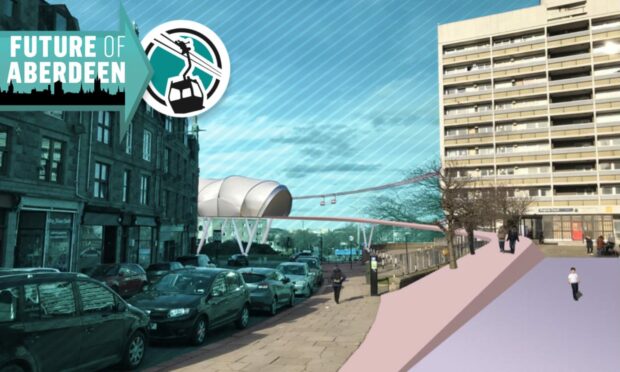
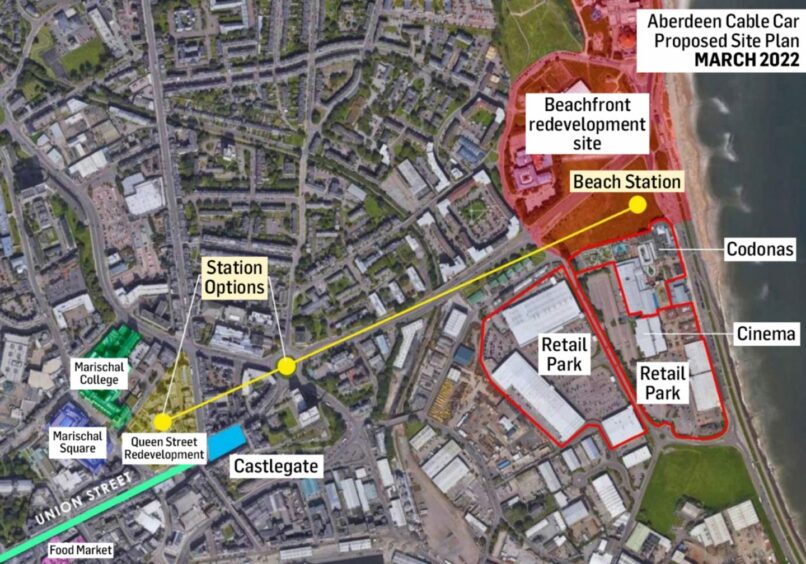
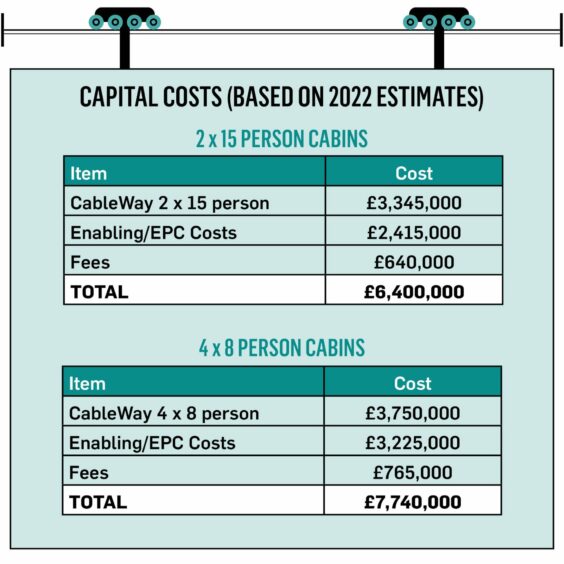
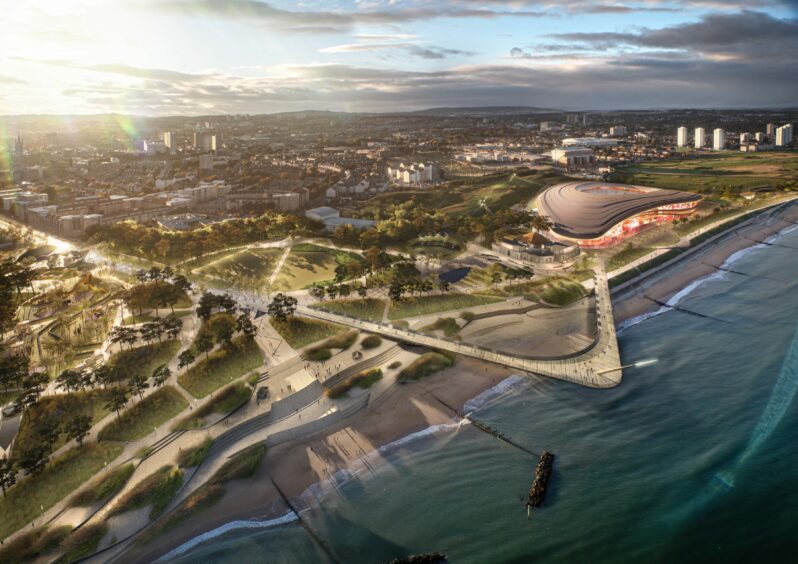
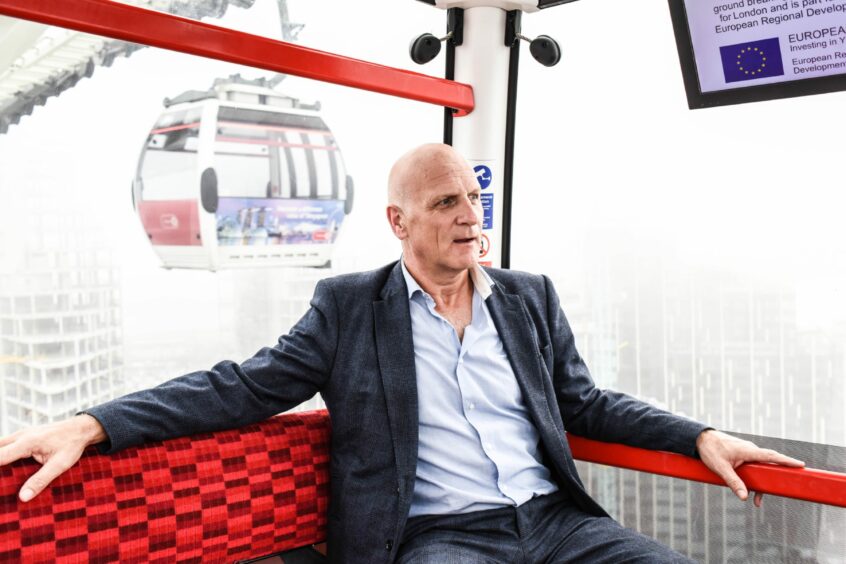
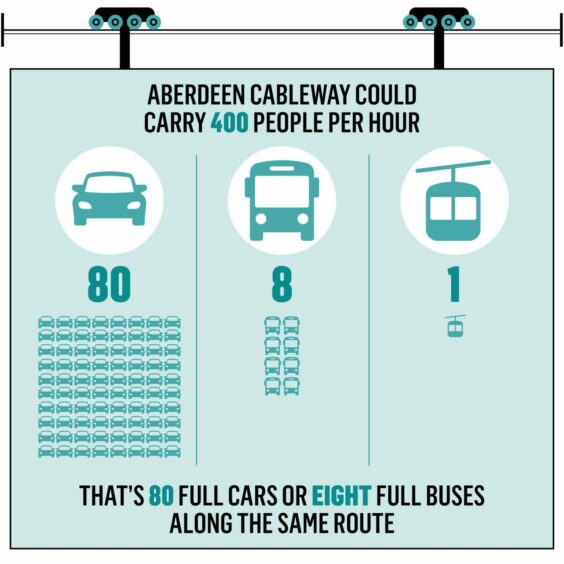
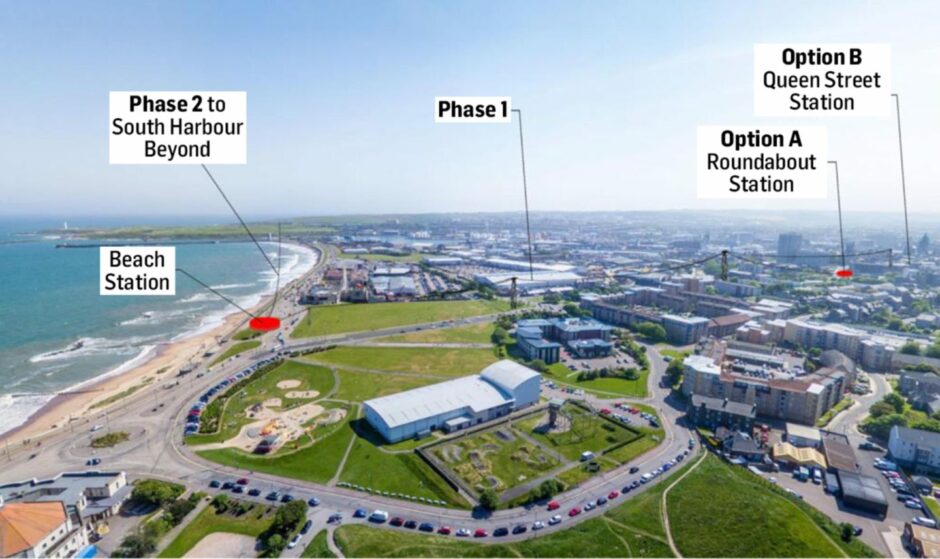
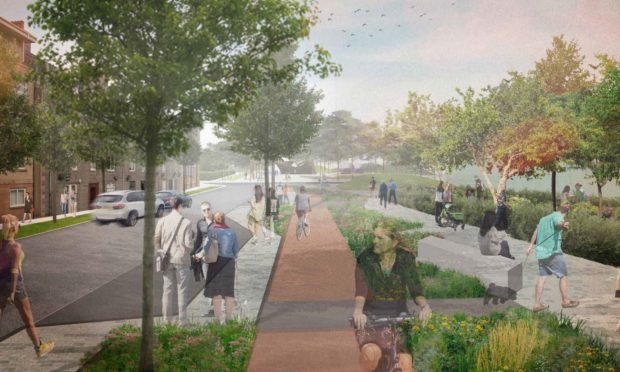
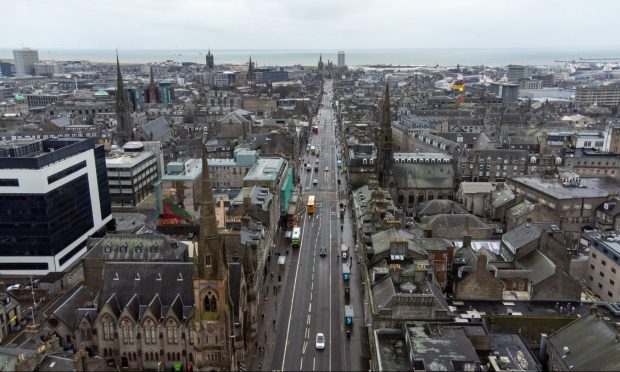
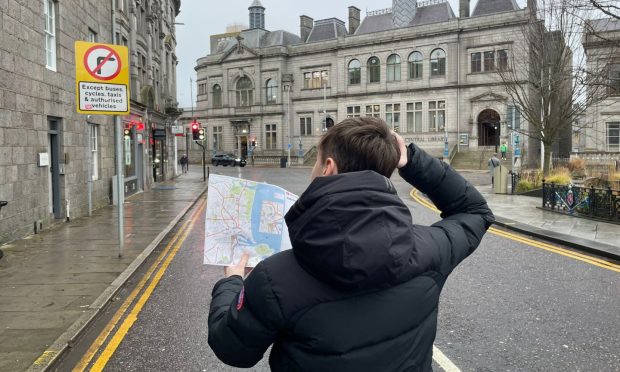
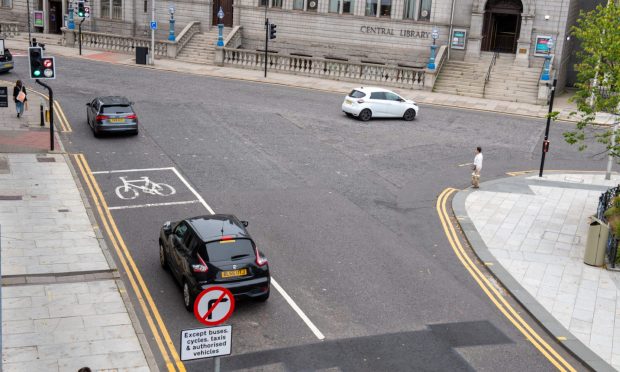
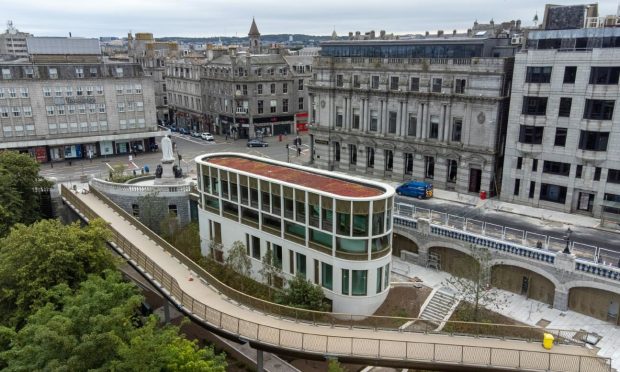
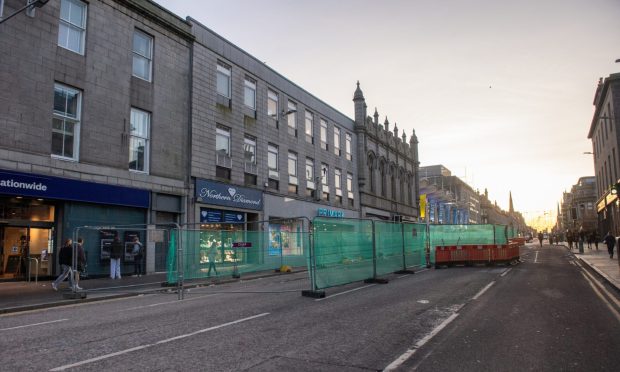
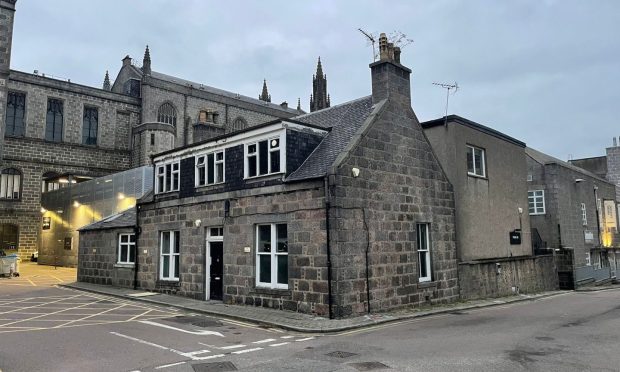
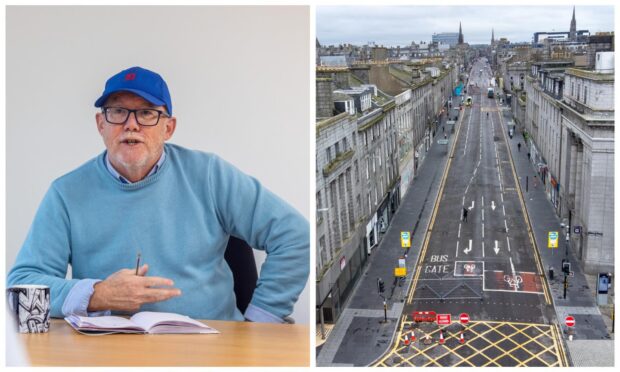

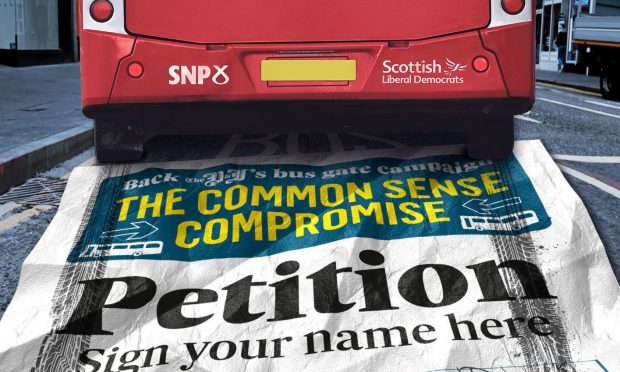
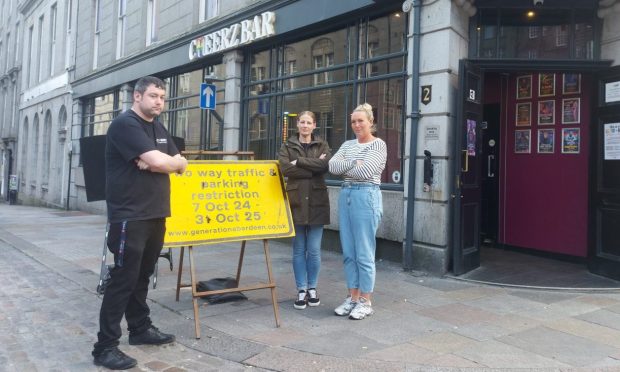
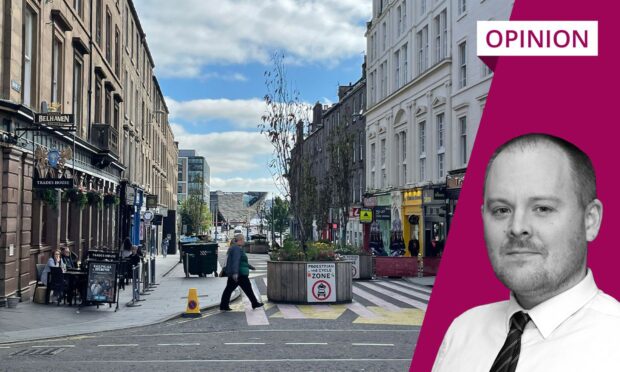
Conversation